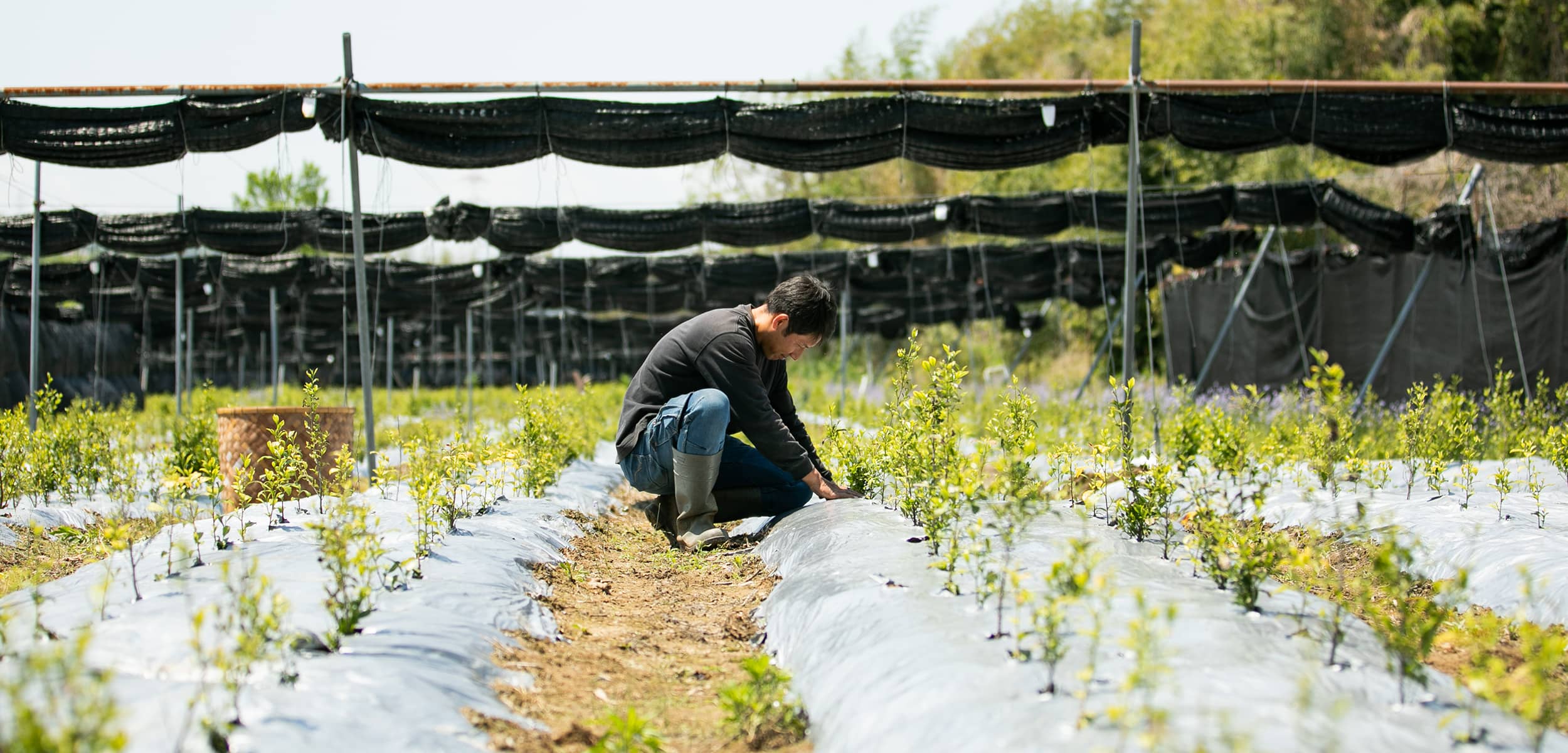Our thoughts on making tea
Kyoto Nishikawa Tea Garden is a production center of Uji Gyokuro Received the blessings of nature in the famous Kyotanabe in southern Kyoto We grow tea leaves with abundant vitality.
With a black cloth called a lawn cloth By blocking sunlight with a cultivation method that covers the tea plantation, Theanine, the sweetness and umami ingredient of tea Prevents it from changing to catechin, an astringent ingredient, It will be a mellow tea with a strong sweetness and umami.
Tencha (Matcha), tea leaves that are the source of gyokuro, We are cultivating with great care.
Inheriting the traditional tea-making culture, I want to carefully deliver it to as many people as possible.
With that feeling, it will take root in this land We will also work on the creation of tea culture.
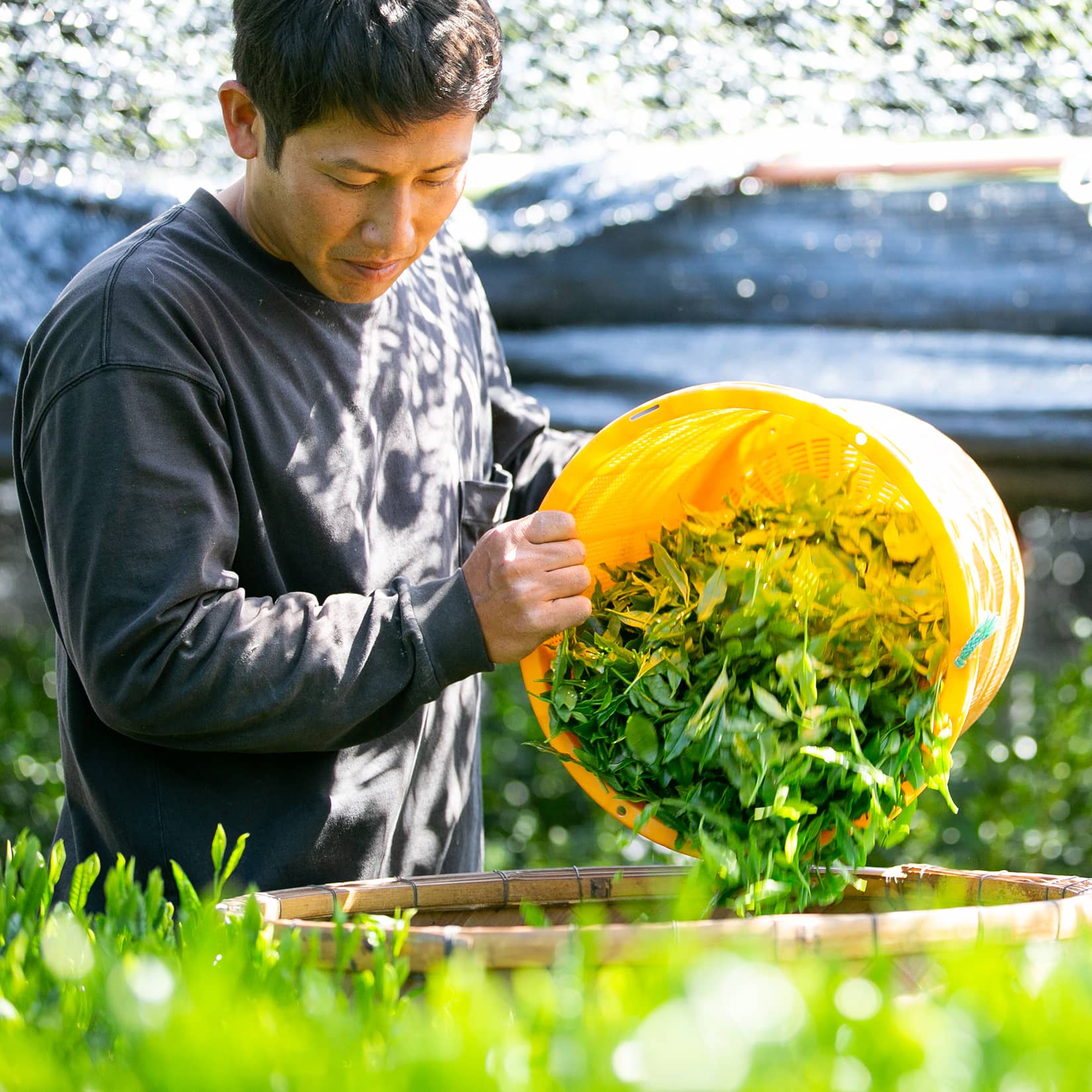
Gyokuro
In the undercover tea garden, cover the shoots for 20 days or more to grow soft green dark shoots. The tea leaves harvested by hand one by one will be exhibited at the competitions (judgment committees) held in each tea-producing region nationwide every year.

Tencha
After steaming the sprouts grown in the undercover tea garden, avoiding direct sunlight, they are dried as they are without kneading to make Tencha, which is the raw material for matcha. Uji Matcha, which is characterized by its mellow taste, has been popular with many people since ancient times.
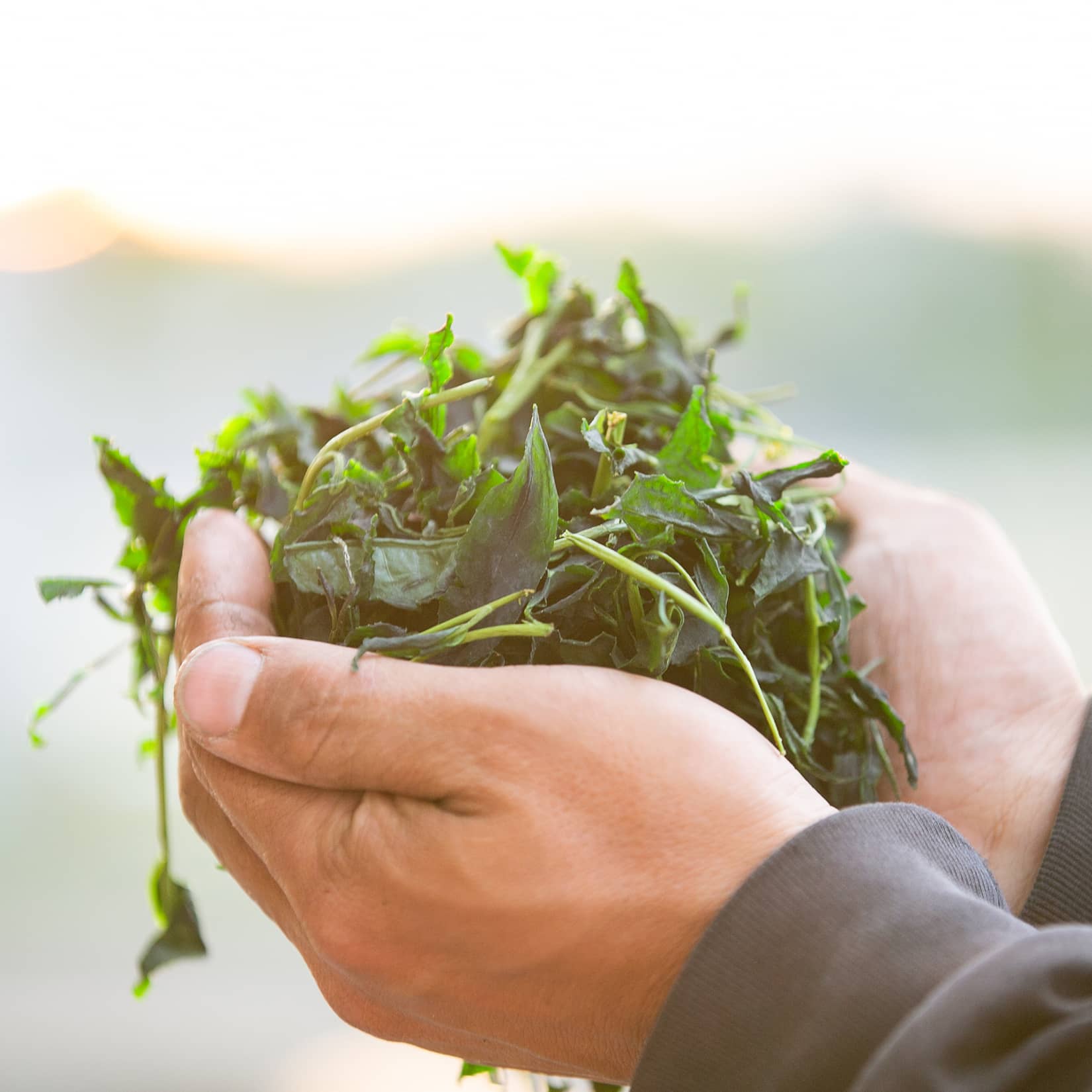
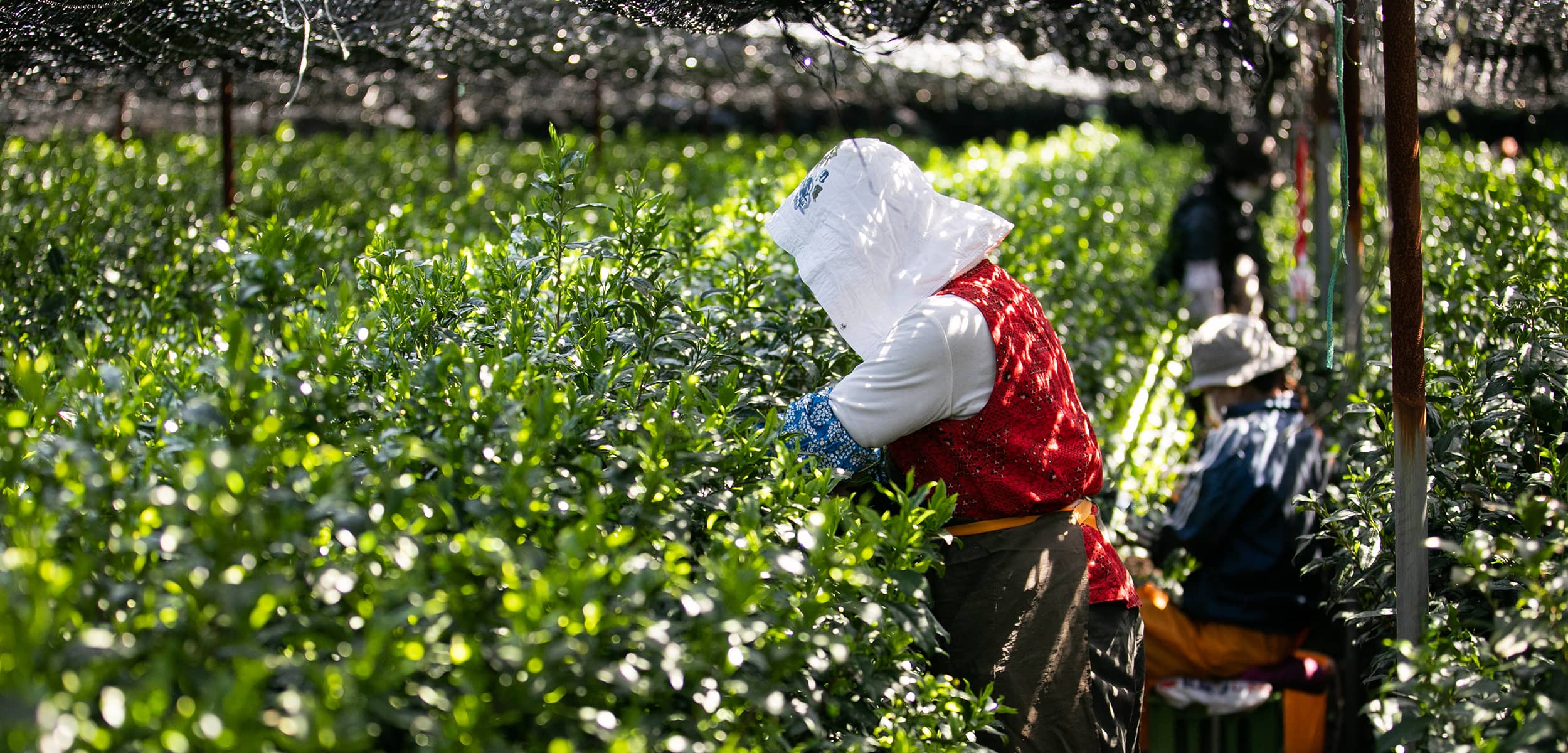
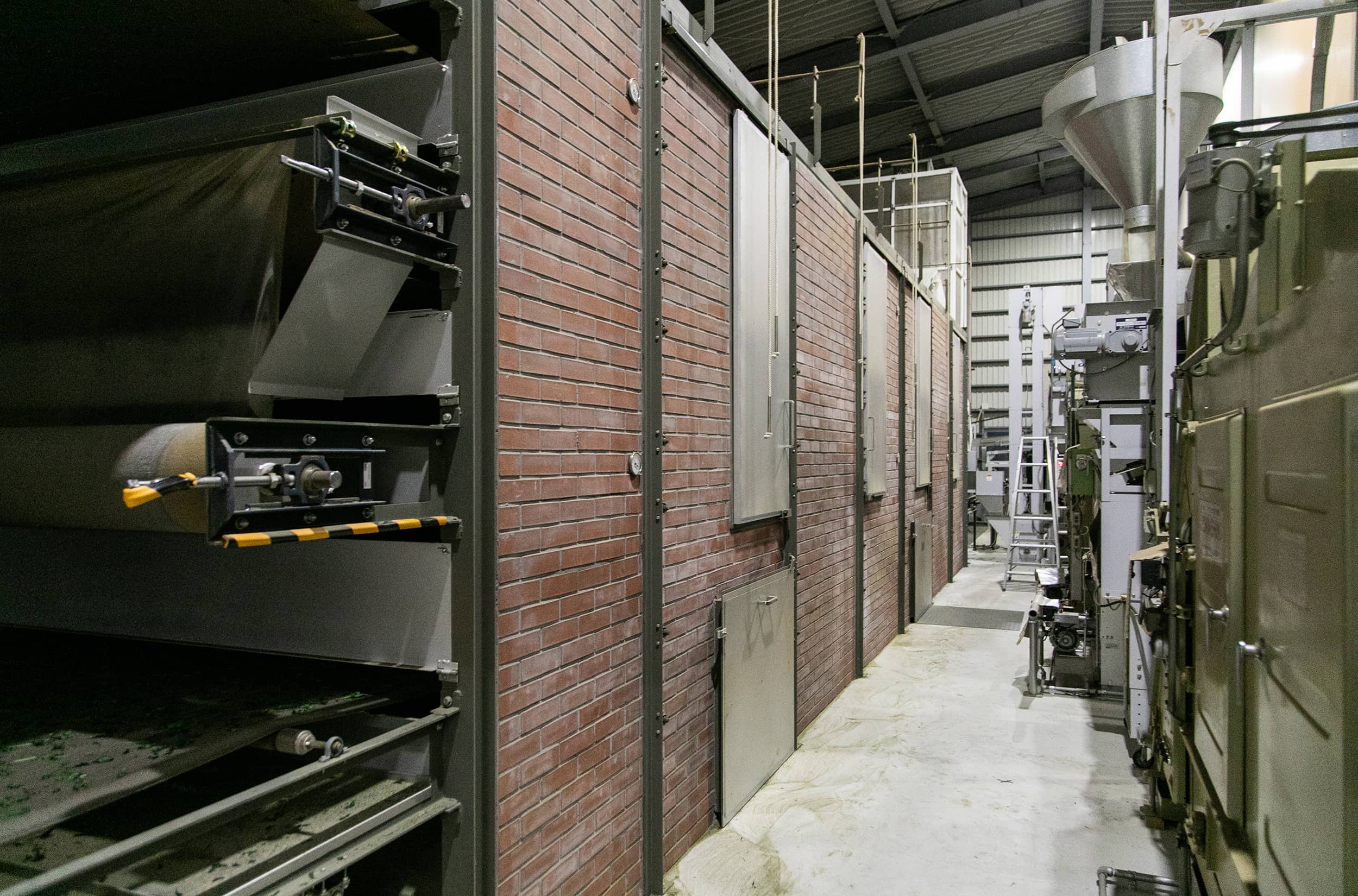
Kyotanabe Tencha Factory
Fresh tea leaves is dried and transformed into Tencha in the "Tencha Furnace", which is characterized by red bricks. About 40 tons of tea leaves can be processed annually.
Fresh tea leaves container
a container with an air blower to prevent deterioration and maintain the quality of tea leaves.
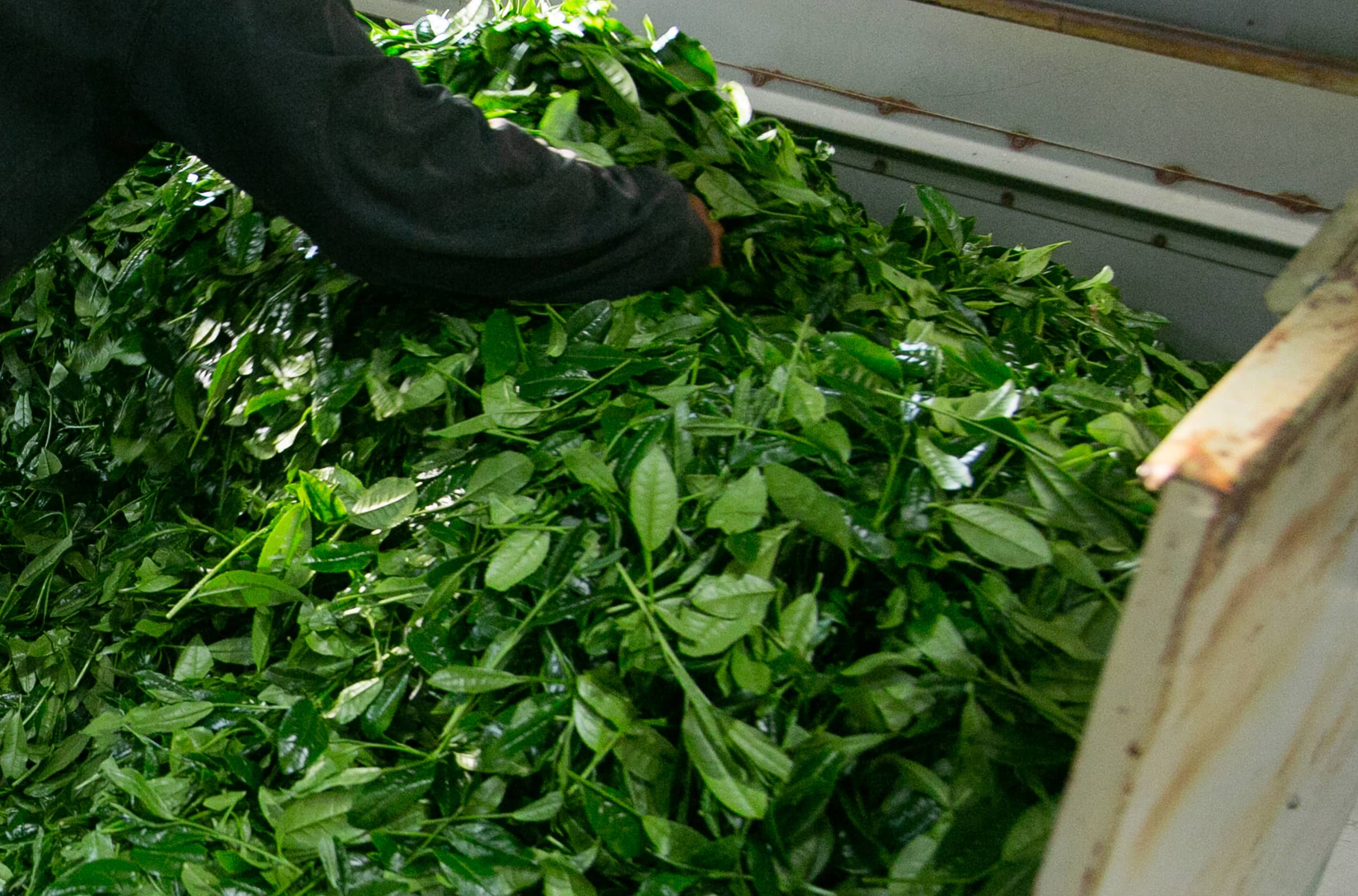
Automatic Feeding
The collected tea leaves are loosened and automatically sent to the steamer evenly to prevent clogging in the next process.
Steaming
In order to stop the activity of the oxidase in the raw leaves, the tea leaves are heated with steam and steamed.The steaming time is slightly shorter than that of normal sencha, and the tea leaves are steamed in about 20 seconds. The clear color and aroma of the tea are brought out by steaming it. If you want to darken the ground color of matcha, take longer steaming time.
Check of the Steaming
This is a very important process because the time of steaming and how the steam is applied affects the taste, aroma, and color of the finished product. It is a work that requires a sense of skill because the buds are different depending on the climate from year to year.
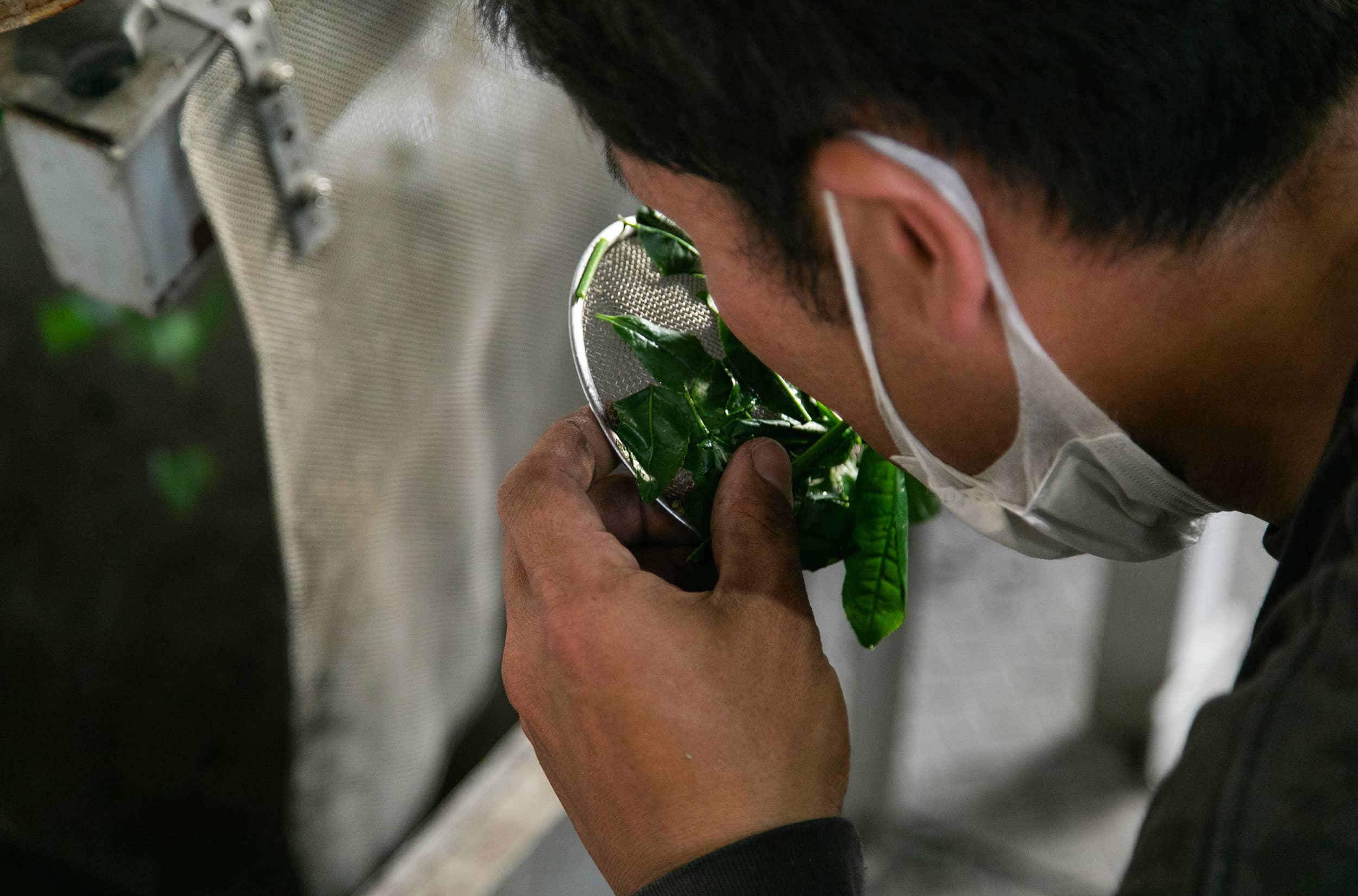
Cooling
A 5-7m tall 'andon', a net-covered tea spreader for cooling, uses wind power to blow up the tea leaves inside. The tea leaves are blown up, down, into the next room, blown up again, and so on until they have passed all the rooms. The tea leaves are cooled while being blown up, spread out so that the steamed leaves do not overlap each other, and finally land on the caterpillar at the bottom of the tencha furnace.
Drying [The tencha-ro]
Tencha-ro is a huge brick oven about 10 meters long. Inside the room, the tea leaves are conveyed by caterpillars with 3 to 5 layers and dried with hot air at a room temperature of 170 to 200°C for about 30 minutes. At first, it is rapidly dried at the bottom (rough drying), and then it is gradually blown up to the top floor and descends in sequence (main drying).
Cutting / Sorting
A machine called tsurugiri is used to cut off the stems from the tea leaves. In addition, hard leaves and remaining stems are sorted out, only good quality leaves are collected, and cut to a certain length. Sorted into buds and stems and dried again.
Bagging / Shipping
The unrefined tea thus produced is packed into bags, and the leaves and stems are each processed by a tea wholesaler. The finished tea of tencha is processed into matcha, and the stems are processed into roasted tea.
